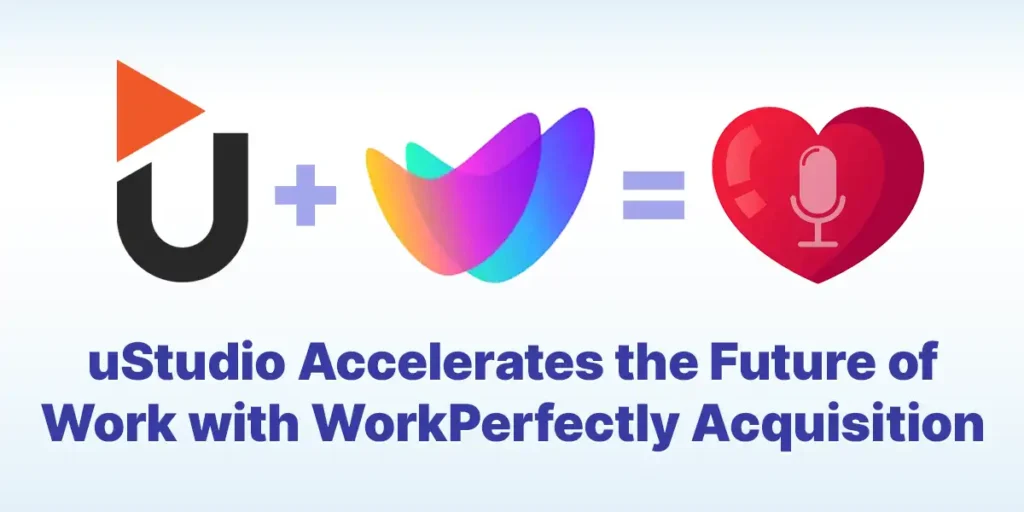How companies can design the right content mix for their podcasts
uStudio Staff | Customer Support, Podcasting

When it comes to choosing the right format for your organization’s private podcast, there is no “one size fits all'' solution. As is the case for any other type of business communication, there are multiple strategies to follow to create engaging content for your employees.
The key for any private podcast is to consider what the organization’s goals are. Is it for the purpose of internal communications, training and learning, or both? Are you hoping to boost sales productivity, strengthen employee and executive relationships, upskill the workforce? Your answers to these questions will shape the type of content you pursue.
In many instances, there won’t be one type of format but a variety that helps the organization realize its objectives. Here are a number of podcast styles that can work well in certain scenarios.
Interview
One route to take with a private podcast is to have a regular host who interviews different individuals every episode. Potential guests include industry thought leaders and passionate employees, whether it’s the head of product offering insights on a recent release or a longtime receptionist sharing funny stories about what things were like at the company in the 80’s. The interview format is a great way to provide employees access to different perspectives and to shine a light on aspects of the workplace or industry that they may not be familiar with.
Conversational
Some workforce podcasts take the approach of a talk show: two or more hosts discuss anything and everything relating to the company. They share their opinions on topics big and small, trade jokes and perhaps even engage in the occasional friendly argument, whether it’s about industry news or the Oscars.
While a “conversational” podcast is naturally informal and may not abide by strict rules, it still requires planning. The hosts need to plan the topics they’ll discuss and the arguments they’ll make. Winging it completely may lead to meandering conversations that don’t go anywhere, or at least not anywhere that aligns with your business goals.
A talk show format is ideal for enhancing worker engagement. Hearing fellow employees dish about the topics that are unique to their workplaces can help to create a sense of kinship and fraternity in the organization.
Solo-casts
A solo-cast features a lone host talking about a subject. The solo-cast is ideal for brand building and creating relationships between a host and listeners - such as the CEO providing weekly company updates to his dispersed and global workforce. With a solo-cast, your audience will get to know the podcast host faster than through additional format options. Rather than a long conversation that might go in multiple directions, this format lends itself to straightforward internal communications or sales enablement messaging.
Videocasts
Don’t forget, private podcasts aren’t necessarily audio-only. With a good private podcasting platform, video is an option. In every instance, you have to consider whether the advantage offered by video is worth the additional effort or resources that comes with filming. If it’s a show that you’re hoping people will listen to while commuting, video obviously isn’t a practical (or safe) idea. However, in a talk show setting that you are hoping employees watch during work hours or free time, there may be situations where you want the hosts to be able to look the audience in the eye to further establish a relationship.
How do you find the right mix?
You and your organization may not have use for some podcasting styles. For instance, you may view podcasting through a strictly training/educational lens and may not have an interest in pursuing a more conversational or entertaining format.
It’s important to recognize, however, that you don’t have to choose just one style. However, within each show, it is important to establish consistency with your content. This will help to initiate listener habits and expectations and keep your show feeling organized overall. An increasing number of companies offer multiple shows that vary in terms of topic, format and length. Even if your main objective is training, mixing in a weekly motivational story or talk show may be a good move and help turn more employees on to the podcast.
One of our clients in the financial services industry got a variety of answers when it asked its employees what they would like to get from the company’s private podcast. Among other things, 54 percent said they were interested in a “day in the life of” type segments about company leaders, 44 percent said they’d like to get more insights from leaders and 17 percent said they’d be interested to hear more about local news that isn’t necessarily related to the company.
Whatever format(s) you pursue, keep an open mind and make sure to get as much feedback as possible from employees. You may be surprised to find out what your workers want to hear!


